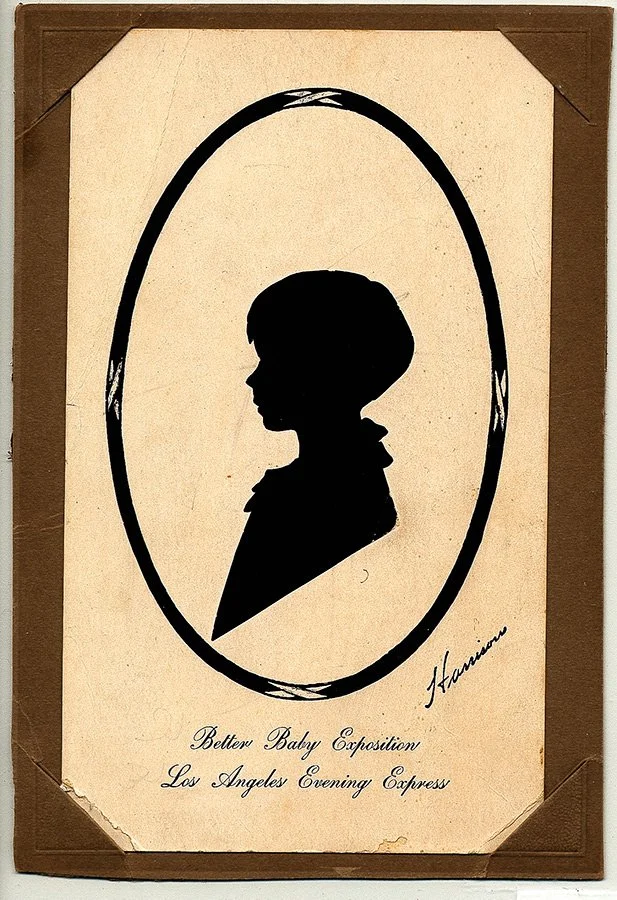Cut from History: The Better Babies Exposition and the Art of A.H. Harrison
Artifact of the Month Blog
October 2025
This sweet silhouette caught our attention, but it was the “Better Babies Exposition” aspect that piqued our interest. What is that? And who is Harrison?
We got more than we bargained for when we delved into researching this intriguing artifact whose tendrils wend their way deeply into family history, American sociology, early 20th-century public health, and the biography of one of the century’s most prolific, yet long forgotten, artists.
The Better Babies Exposition was a large-scale public health event organized by the Los Angeles Express newspaper. It evolved from earlier initiatives like “Better Babies Week”, itself inspired by Better Baby Contests held at state fairs across the US – the first held at Shreveport, Louisiana, in 1913.
These contests aimed to combat high infant mortality rates and raise public health awareness. At the time, approximately 100 out of every 1,000 infants died before their first birthday, according to the CDC. While supporters of the contests focused on improving children’s health and parental education, detractors have pointed out the movement’s ties to eugenic theories, which advocated for preventing “unfit” members of society from reproducing.
The silhouette was created by A.H. Harrison, known during his time as “The Man with the Magic Shears”. By the time he passed in 1926 at only 62, he had been cutting silhouettes for 35 years and completed over 400,000 of them. His subjects included many theater stars and US presidents such as Teddy Roosevelt, Benjamin Harrison, Grover Cleveland, and William McKinley. He was most proud of his full-size silhouette of Secretary of State William Jennings Bryan. His favorite subjects, however, were children.
Unfortunately, an album containing silhouettes of some of his most famous subjects, including himself, was destroyed in a hotel fire in Richmond, Virginia. It was in that same hotel fire that Harrison jumped from a window, sustaining injuries from which he never recovered. The hotel burned to the ground.
We tried earnestly to identify the subject of the silhouette on display, to no avail. We did, however, uncover some tantalizing family history connected to the donor. The card came from the collection of genre and landscape artist Pearl Robison (Burrows) Burns (1887-1958), through George Michels.
We knew the child depicted could not have been Pearl or George, and Pearl had no children, so we had to dig deeper. Pearl had a niece and nephew who were the right age, but they didn’t live in Los Angeles at the time. However, her nephew Thomas Watson, Jr. married a woman named Francis Duffy—who did live in Los Angeles and was the right age.


